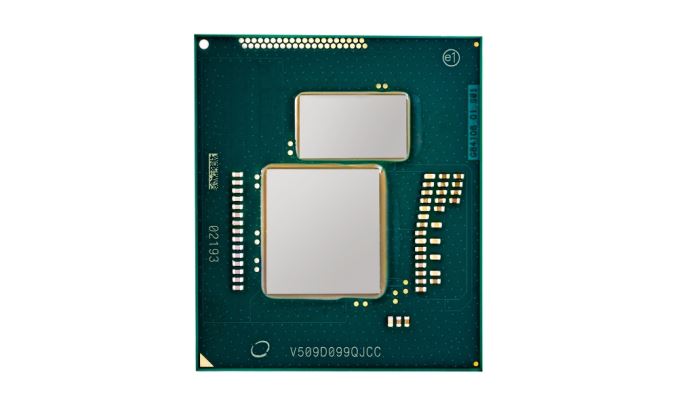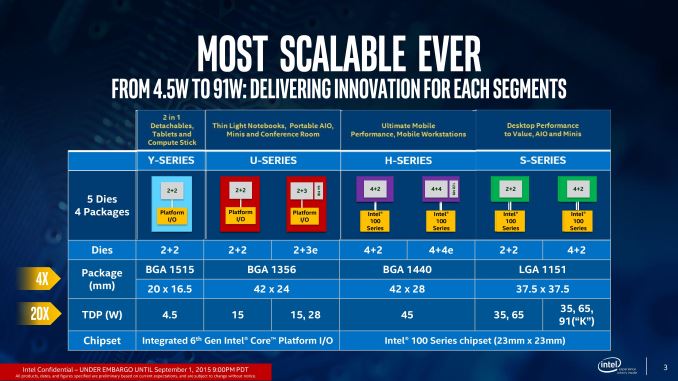The Death of Intel’s Broadwell Has Been Greatly Exaggerated - Socketed Broadwell Continues
by Ryan Smith on September 17, 2015 8:45 PM EST- Posted in
- CPUs
- Intel
- Broadwell
- Crystal Well
- Iris Pro

To hop right into the heart of matters, IT World published an article earlier this afternoon stating that Intel was discontinuing their two desktop Broadwell socketed SKUs, the Core i7-5775C and the Core i5-5675C. The two SKUs are notable because they are to date the only socketed Broadwell processors on the desktop, and they are also the only socketed desktop Core processors available with a GT3e Iris Pro GPU configuration – that is, Intel’s more powerful GPU combined with 128MB of eDRAM.
The idea that these processors were discontinued came as quite a shock with us, and after asking Intel for more details, the company quickly responded. Intel has made it very clear to us that these processors have not been discontinued, and that the company continues to manufacture and sell the processors as part of their current Broadwell lineup.
While the company doesn’t have an immediate explaination for the confusion at this time, we believe it may stem from a mix up over Intel’s plans for GT3e/GT4e Skylake parts on the desktop. In short, the company does not have any socketed GT3e/GT4e Core family parts on their roadmap for Skylake, so these Broadwell parts will not be seeing a Skylake refresh. That said, it should also be noted that Intel has not yet begun to ship GT3e/GT4e Skylake chips in other form factors (e.g. the 45W mobile H series), so Intel’s current Broadwell SKUs remain as their top-of-the-line SKUs for graphics across all segments, and it’s likely that will remain the case until 2016 when the Skylake 4+4e parts launch for mobile.
Part of the confusion may also stem from a lack of good supply for these processors in the US. Though we’ve seen evidence that the supply is ample in Europe and Asia, retailers such as Newegg have regularly been out of stock of these two processors since their launch in June. Intel’s last comment on the matter, made to the Tech Report back in August, is that the overall supply situation should pick up through Q3, which at this point is the rest of September. After which these SKUs will remain available and Intel’s top desktop graphics SKUs throughout the run of Skylake.











43 Comments
View All Comments
DanNeely - Friday, September 18, 2015 - link
Ummm what? Broadwell as a die shrink of haswell has been the Tick half of the Tick-Tock strategy Intel's used since 2007.Oxford Guy - Saturday, September 19, 2015 - link
For gamers, a failure. But, my 8 core FX is doing extremely nicely for the workloads it's being used for given that it cost $133.75 with an 8 phase motherboard. There is more to computing than gaming performance, although the chips are even looking better in that now that games are beginning to actually have modern engines that can load more than a few cores.lmcd - Monday, September 21, 2015 - link
8 cores of what? Sorry but the AMD fanboy post is unnecessary here -- it's been a long time since Richland cores meant much of anything. I guess the FX is a good value compared to, say, Nehalem.Broadwell is excellent. It did well in benchmarks and the Crystalwell parts are very intriguing. A Skylake Crystalwell would've been perfect for a couple of my friends, who wanted good iGPUs while waiting for Pascal.
gearhead99 - Monday, September 28, 2015 - link
... yeah that's 8 ECC and IOMMU capable cores in 2012 btw... its not always as simple as being a fanboy. what oxford guy said is just a fact, more games are using more cores and so what. My games are just fine since adding a 960 gpu. the system has been rock solid stable for years. i can't come up with a justification to upgrade the cpu as much as i'd like to. an 8 core FX is just fine for many many workloads, don't kid yourself about how much that extra whatever % matters in real life to non-gamersjrs77 - Friday, September 18, 2015 - link
I've got an i7-5775C up and running for over a month now, and it was the best decision I could've made. The CPU is reasonably fast at stock and the IrisPro makes a dedicated GPU unnecessary for my needs.I use this CPU for my graphics-workstation running AdobeCS, 3ds Max + Vray and some video-stuff. The IrisPro is totally fine accelerating these programs and I even can play stuff like Borderlands or EvE Online in 1080p without problems.
The best thing is, that my new rig is allmost inaudible and fits into a very small Cooltek/Jonsbo U1 case.
ImSpartacus - Friday, September 18, 2015 - link
Neat, I've always been fascinated by how capable integrated graphics could be for modest use cases. Yours is a particularly interesting use case since you need the pricey cpu, but not necessary a remarkable gpu.Oxford Guy - Saturday, September 19, 2015 - link
Price/performance is likely a problem with Iris Pro, though, eh?lmcd - Monday, September 21, 2015 - link
Actually Intel didn't exactly price the parts out of the park. Surprising, but interesting and appealing for the use-case he described. I personally found it interesting as a stop-gap while waiting for Pascal.jrs77 - Monday, September 21, 2015 - link
Price /Performance is actually spot on. I tried using the HD4600 of an i7-4770, but it didn't work that good. Panning and zooming big images in Photoshop wasn't smooth and the 3d-preview in V-Ray RT was very slow.The IrisPro 6200 is comparable in performance to an entry-level card like the GT740 or R7-240, which both cost some $80. If you add those $80 to the i7-4770, then you'll end up with the same price of the i7-5775C, however you now have a way smaller package and less power-consumption in comparison.
I could've built an even smaller system in the size of a MacMini by using the i7-5775C with it's 65W TDP, but then it wouldn't have been as silent.
watzupken - Friday, September 18, 2015 - link
Then the question is, where are the chips then? I actually think the socketed Broadwell seems like a good alternative to the Skylake chips, with its e-dram.